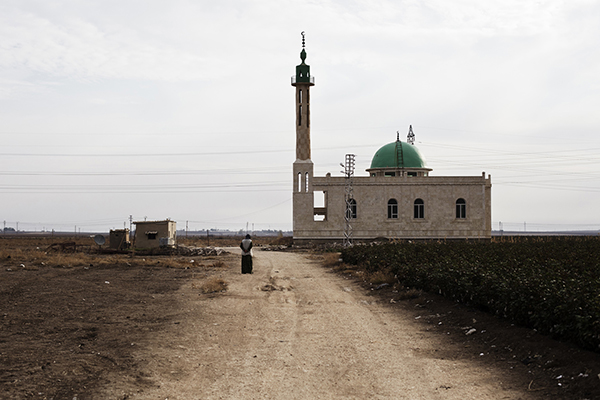
Achilleas Zavallis—AFP
U.S. experts say the Syrian civil war has bolstered the terrorist network.
Despite his killing in May 2011, Osama bin Laden’s Al Qaeda is more dangerous than ever, according to U.S. experts and counterterrorism officials.
Thanks notably to a flood of recruits joining Al Qaeda-linked jihadist forces fighting in Syria’s civil war, Al Qaeda is back on its feet, and securing territory from which it could once more threaten Europe and the United States.
Bin Laden’s former lieutenants in Al Qaeda’s historic leadership have been killed by U.S. Special Forces or in drone strikes, or else are isolated and on the run in the tribal badlands on the Afghan-Pakistan border. But armed groups in Syria, Somalia, Yemen, Libya, and West Africa have flocked to it and Al Qaeda is rebuilding its influence across the region.
“Their leadership has been hit very hard, but this brand is still growing. And it’s growing from an increased number of safe havens,” said James Mattis, a retired general who led U.S. Central Command until earlier this year, at the Jamestown Foundation’s seventh annual conference on terrorism in Washington. “The congratulations that we heard two years ago on the demise of Al Qaeda were premature and are now discredited … Al Qaeda is resilient, they adapted. We have to think strategically before we act, not only act tactically.”
Bin Laden’s death triggered a wave of optimism that the U.S. and its allies might have broken the back of the jihadist threat, but today officials in Washington are under no illusions.
Militants inspired by or linked to bin Laden’s brand of armed jihad have sacked a U.S. consulate in Libya, stormed a shopping mall in Kenya, waged attacks in Iraq, Al Qaeda has reportedly begun operating in Egypt’s Sinai desert, and violent extremist groups are now the most powerful elements in the rebel coalition fighting in the Syrian civil war.
Bruce Hoffman, director of the Center for Peace and Security Studies at Georgetown University, told the conference on Thursday that collapsing states in the Middle East were opening up space for extremists. “The oxygen that Al Qaeda depends on is access to sanctuaries and safe havens. And unfortunately, over the past two years, it gained greater access to more ungoverned spaces.” He cited the Nairobi and Mumbai attacks as evidence of Al Qaeda’s gaining steam, and warned of “Mumbai-style attacks in Europe.”
Syria’s civil war—which has attracted Islamists from Muslim communities in Europe as well as Arab countries—has worked to Al Qaeda’s advantage. “The Al Qaeda-affiliated groups have created an alliance which [comprises] 45,000 guerrilla fighters across the country,” said David Kilcullen, a counterinsurgency expert who has advised U.S. forces in the field. “It’s a very significant number, almost twice as many as we see in terms of Taliban fighters in Afghanistan,” he said. “We’re seeing a recovery on all fronts for Al Qaeda.”
For Bruce Riedel, a CIA veteran who now works for the Brookings Institution, Al Qaeda’s resurgence is proof that it has managed to ride out and ultimately profit from the revolts that have roiled the Middle East and North Africa. “Al Qaeda’s narrative was challenged in 2011 by the Arab Spring. Peaceful demonstrations succeeded in toppling dictators. Al Qaeda’s narrative was at risk. Terror had not produced change, Twitter had,” Riedel said. “But today, everything is different. Al Qaeda’s narrative is validated in 2013, most notably in Egypt. The counterrevolution has succeeded; the Army has overthrown the elected government. For those who want to join Al Qaeda’s movement, events in Cairo [and] Damascus have validated what they long said: Jihad is the only solution to the problem of change in the Muslim world today.”
